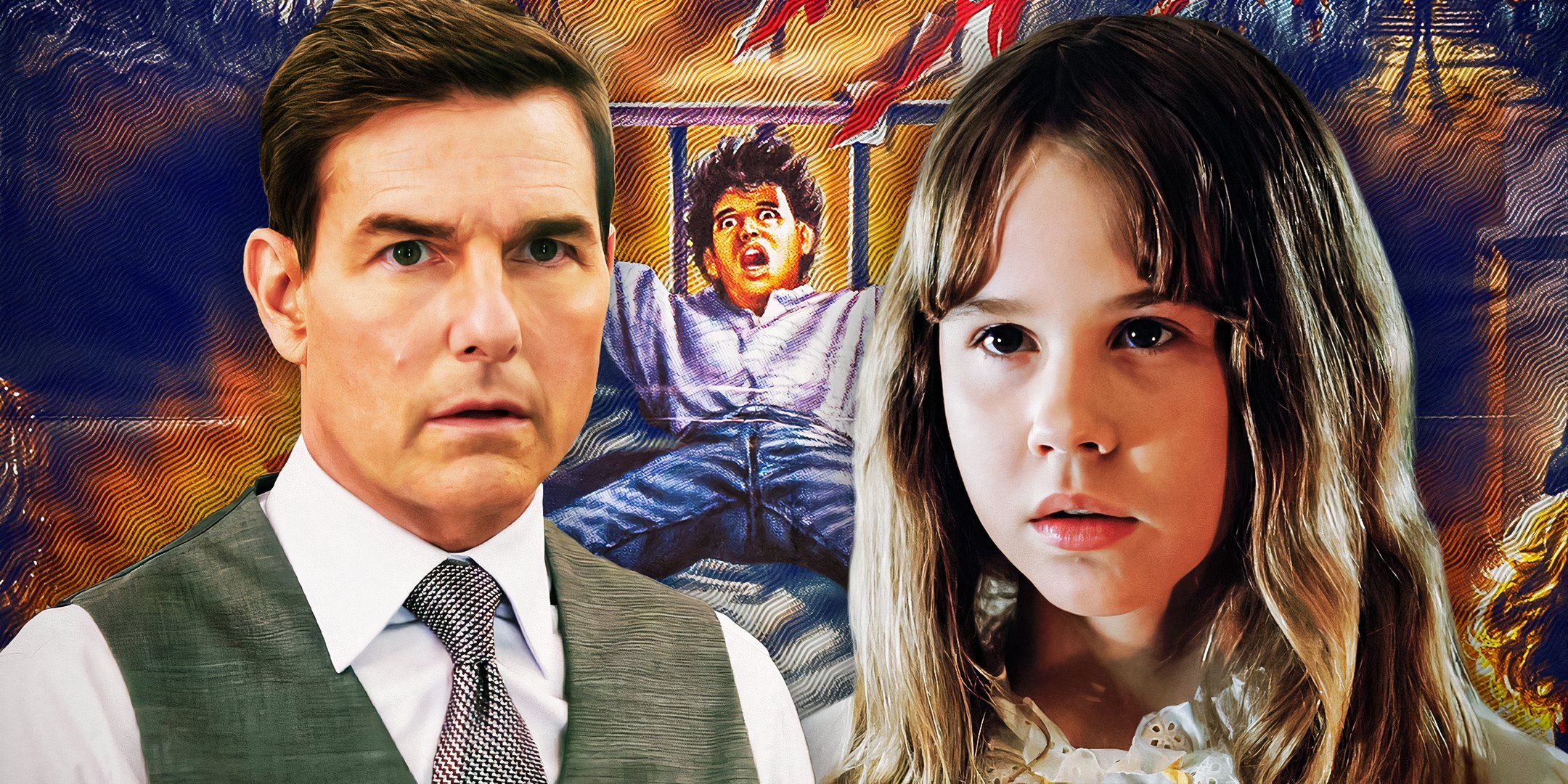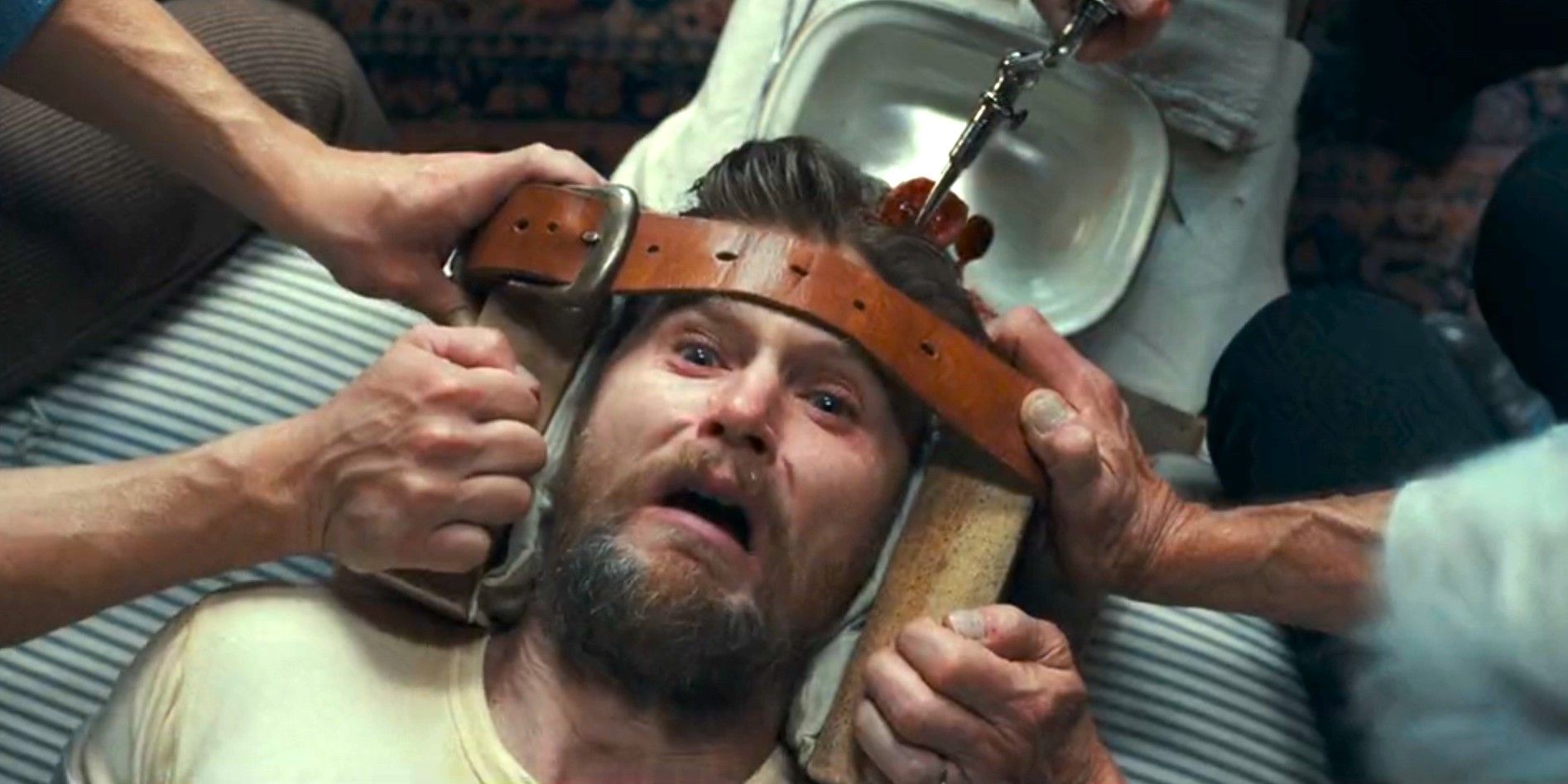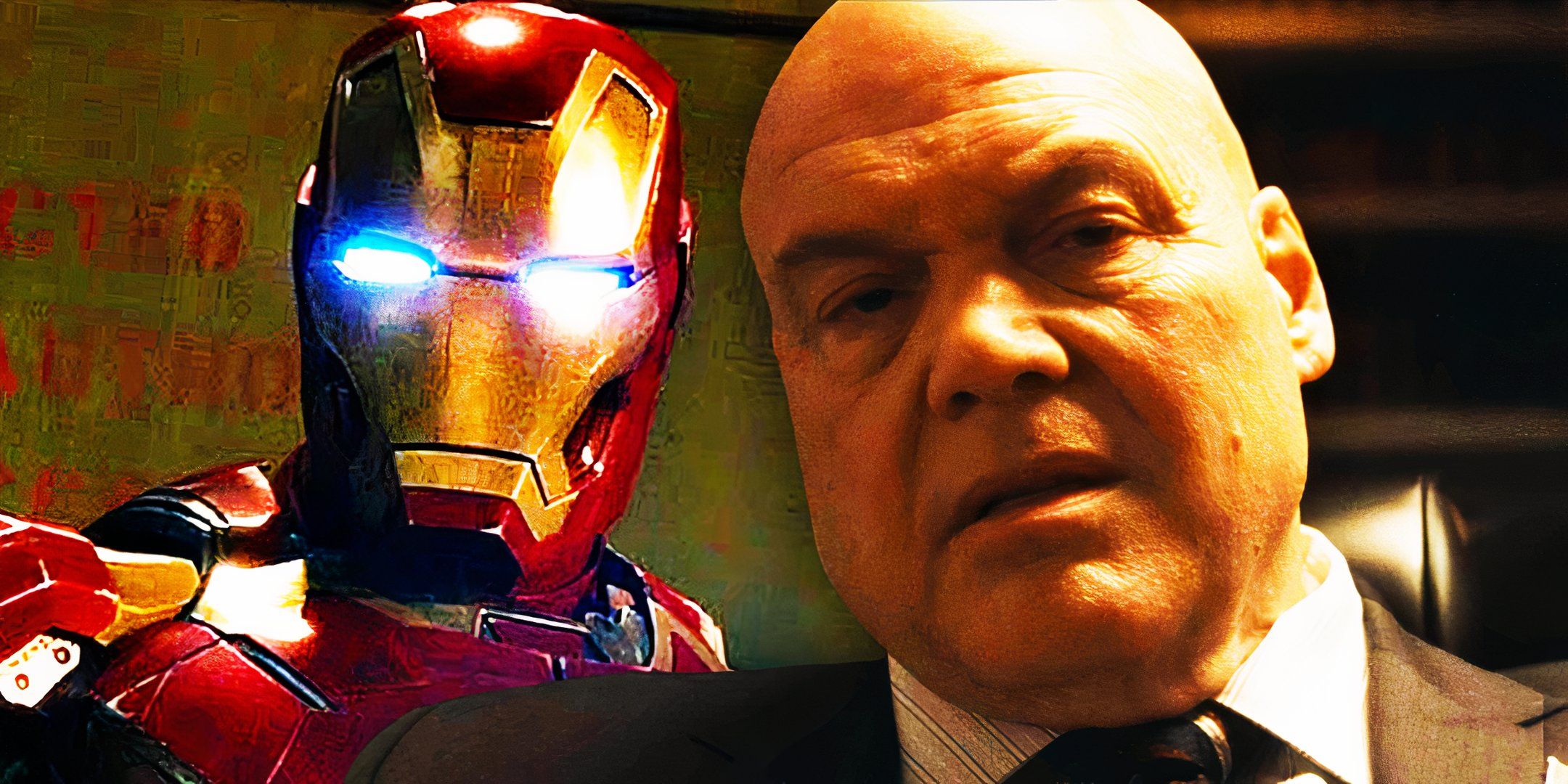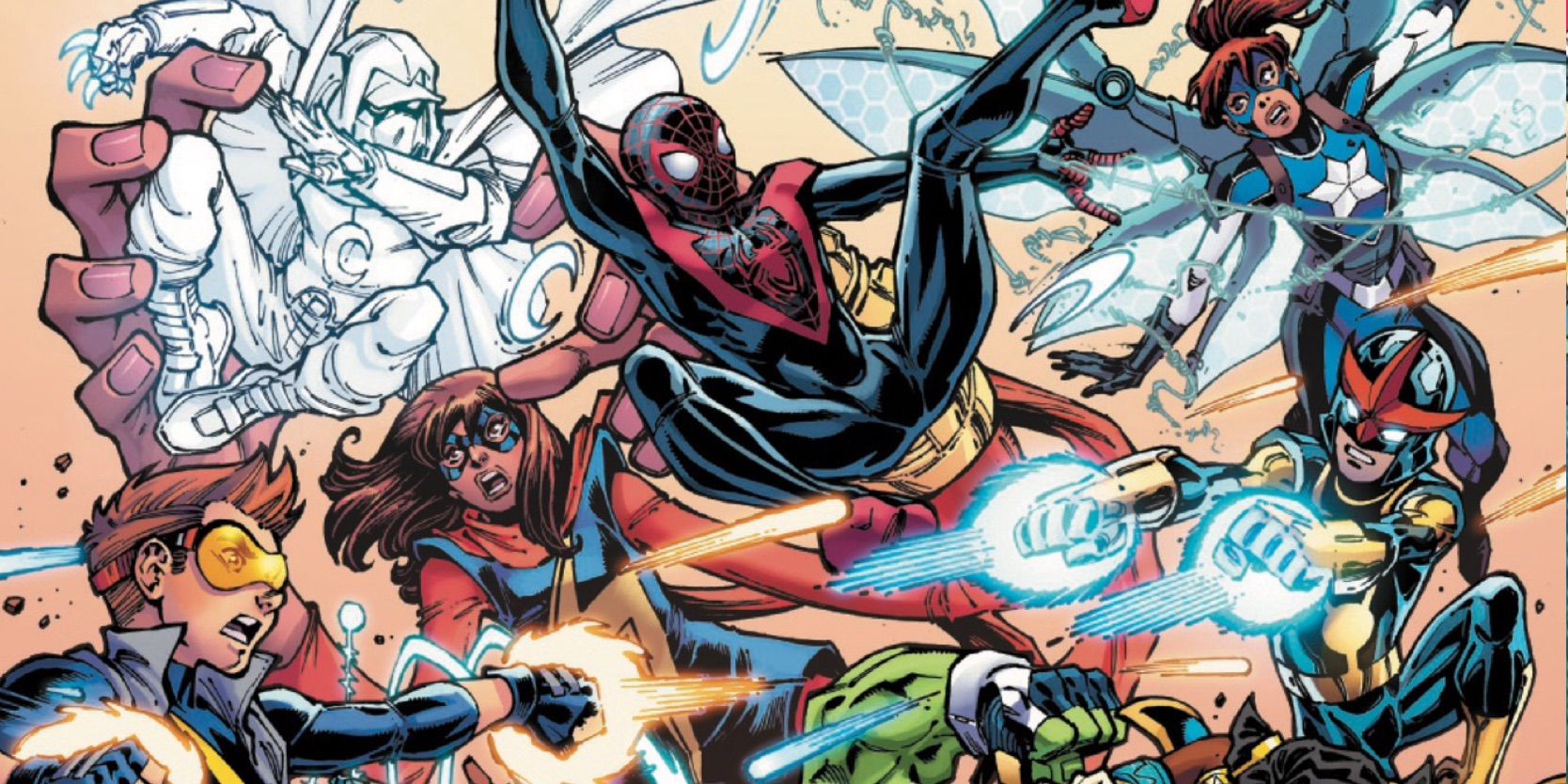10 Movie Franchises That Bounced Back After A Disappointing Second Film
One of the most consistent trends for franchises is the disappointing sequel to the first movie. Of course, there are movie franchises where each successive movie is better than its predecessor, but that's considerably rarer. However, a less consistent trend is the worst movie sequels of all time being followed by better third movies that allow franchises to bounce back. Some of these terrible sequels surprisingly don't kill their franchises, buoyed by a better follow-up that revitalized people's faith and interest in the series.
Movie franchises that rebounded after a disappointing sequel often have a pattern in the creative choices. The disappointing sequel usually fails to live up to the standards of the original because creators are trying to recapture the magic of the original film by treating the first movie as a blueprint. The third movie on which the franchise's future hinges is often where people take the biggest risks, allowing for refreshing perspectives and an improved approach to the tropes of the original movies. If the risk doesn't pay off, the franchise may end, but more of the same doesn't guarantee survival either.
10 Mission: Impossible
Mission: Impossible III (2006) After Mission: Impossible 2 (2000)
John Woo is rightfully revered as one of the greatest action filmmakers in cinema history, but his unique style didn't suit the Mission: Impossible franchise. While the second film was still a commercial success, it's the only movie in the franchise that wasn't critically acclaimed. The slow-motion effects, the martial arts, and the explosions aren't appropriate for Ethan Hunt's espionage-driven stories. Every Mission: Impossible movie has unbelievable stunt set pieces, but they're more about parkour than combat. Mission: Impossible 2 is simply misguided.
Related How Mission: Impossible 3 Became The Tokyo Drift Of The Series Mission: Impossible 3 was a box-office disappointment in 2006 and shares several parallels with Tokyo Drift in how later sequels referenced it.
The late Philip Seymour Hoffman was the last person one would expect to see in an action blockbuster, but his character in Mission: Impossible 3 provides the franchise with one of its most despicable villains. The threequel is considered the best in the franchise, and it set the new tone Mission: Impossible then ran with for every following movie. It introduces a villain who doesn't hold back, a balance between parkour stunts and choreographed fights, and also features personal stakes for Ethan, all of which recur in every movie in the franchise.
9 The Exorcist
The Exorcist III (1990) After Exorcist II: The Heretic (1977)
Your changes have been saved The Exorcist Your Rating close 10 stars 9 stars 8 stars 7 stars 6 stars 5 stars 4 stars 3 stars 2 stars 1 star 0/10 "The Exorcist" is a horror franchise that began with the iconic 1973 film, widely regarded as one of the scariest movies ever made. The franchise revolves around themes of demonic possession and exorcism, typically focusing on the battle between priests and evil spirits. Known for its terrifying atmosphere, psychological depth, and religious themes, "The Exorcist" has expanded into multiple films, a TV series, novels, and more, leaving a lasting impact on the horror genre. Created by William Peter Blatty First Film The Exorcist Latest Film The Exorcist: Believer Upcoming Films The Exorcist: Deceiver Cast Linda Blair , Ellen Burstyn , Max Von Sydow , Jason Miller , Lee J. Cobb , Kitty Winn , Richard Burton , Louise Fletcher , John Boorman , Geena Davis , Ben Daniels , Alfonso Herrera
Exorcist II: The Heretic deviated from its predecessor despite featuring a recurring performance by Linda Blair. Every experimental choice feels like it was made to create a worse movie than the original. The surrealism doesn't fit the subject matter, and as a sequel to The Exorcist, a classic horror movie that still holds up today, it's beyond disappointing. The moments of horrifying possession instead feel like instances of physical comedy; while it works as an absurd film, the franchise needed a great film next to revitalize it.
The Exorcist III is exactly that — a refreshing return to the classic source material. Yet instead of focusing on the antichrist, the movie offers commentary on the nature of faith itself and the fallibility of religious institutions. The jumpscares are meticulously constructed to instill fear in viewers even after multiple rewatches, and Brad Dourif's performance is the icing on the cake. The fact Exorcist III uses atmospheric techniques and dialogue to scare audiences long before the first jumpscare makes it an example of elevated horror, which is an astounding comeback from Exorcist II: The Heretic.
8 Die Hard
Die Hard With A Vengeance (1995) After Die Hard 2 (1990)
The Die Hard franchise is one of the best examples of the previously discussed trend in movie sequels. Die Hard 2 desperately tries to recreate Die Hard, and fails to do so, only for Die Hard with a Vengeance to then adopt an entirely new structure and save the franchise. Die Hard 2 simply shifts the location, has much less emotionally engaging dialogue, and doesn't have the same sense of urgency as Die Hard. Die Hard with a Vengeance throws away the script and the formula.
The threequel reinvents the persona of John McClane by situating him in New York and providing him with a wider range of set pieces. Samuel L. Jackson as McClane's sidekick adds a touch of buddy cop energy to the film, which works wonders. As an action-comedy, it revived the franchise after the boring affair that was Die Hard 2. Unfortunately, despite Die Hard with a Vengeance arguably being the best in the franchise, the franchise never really rebounded in quality, and both of the next films are worse even than Die Hard 2.
7 Daniel Craig-Era James Bond
Skyfall (2012) After Quantum Of Solace (2008)
Your changes have been saved James Bond Your Rating close 10 stars 9 stars 8 stars 7 stars 6 stars 5 stars 4 stars 3 stars 2 stars 1 star 0/10 The James Bond franchise follows the adventures of British secret agent 007 as he combats global threats. With a license to kill, Bond faces off against various villains and criminal organizations, employing high-tech gadgets, espionage, and charm. The series spans multiple films, featuring exotic locations, thrilling action sequences, and memorable characters. Bond's mission to protect the world and uphold justice remains central, making the franchise an enduring icon in the spy genre. Created by Ian Fleming , Albert R. Broccoli First Film Dr. No Latest Film No Time to Die Cast Sean Connery , George Lazenby , Roger Moore , Timothy Dalton , Pierce Brosnan , Daniel Craig
Casino Royale would always be a very hard film to follow because nothing could possibly live up to the standards set by Daniel Craig and Mads Mikkelsen's presences and performances, elevated by a melancholic interpretation of the iconic spy that reimagines him away from the pulp of the classic era of James Bond. However, nobody could have predicted that the sequel would be as disappointing as Quantum of Solace was. With bizarre editing choices that take away from the visual grandeur, it falls flatter than it deserves to.
There will always be a debate about which is the best James Bond movie between Skyfall and Casino Royale, but the fact that the latter is good enough to be in contention with the first Daniel Craig James Bond movie demonstrates how well the franchise bounced back after Quantum of Solace. Fluid cinematography, a charismatic villain in Javier Bardem, and the suave, brooding action man Bond at the height of an identity crisis, all make Skyfall an entertaining and emotionally impactful action thriller.
6 MCU's Iron Man
Iron Man 3 (2013) After Iron Man 2 (2010)
While it's memorable for Black Widow's introduction and for featuring one of the most comically insufferable antagonists in Sam Rockwell's Justin Hammer, Iron Man 2 lacks the entertainment value of the original film that started the MCU. The rampant misogyny and the frustrating regression of Tony Stark's personality make it feel like a test of patience. Rockwell's character is supposed to be insufferable and his commitment to the bit is a joy to watch, but Tony should be charismatic. Instead, he's also, unintentionally, insufferable.
Meanwhile, Iron Man 3 is easily one of the most underappreciated films in the MCU. While viewers were understandably frustrated by the weird persona of the Mandarin, he's the definition of a campy villain — a literal pawn with no real stakes in the game. But what truly elevates Iron Man 3 to levels far above its predecessor is Tony's emotional journey. His relationships and attempt at reconciling his loneliness both make him a better person, and the climactic scene perfectly bids farewell to the solo franchise for Robert Downey Jr.'s most iconic role.
5 Star Wars Prequel Trilogy
Revenge Of The Sith (2005) After Attack Of The Clones (2002)
While it is one of the more unpopular opinions about the Star Wars prequels, Jar Jar Binks is simply not present for long enough in Star Wars: The Phantom Menace to ruin the movie, as many viewers like to claim. So, as a sequel, Attack of the Clones is an utter disappointment. As a campy, nearly satirical rom-com set in outer space, it's an entertaining movie, but the main plot itself is poorly paced. With a whole boring 20 minutes of exposition followed by action-packed fight scenes, Attack of the Clones is consistently inconsistent.
Related Every Star Wars Movie, Ranked Worst To Best Looking at all nine Skywalker Saga entries and three spinoffs, we crown the best Star Wars movie in our full ranking of the galaxy far, far away.
On the other hand, Revenge of the Sith is the best prequel movie. While the pacing issues continue, which cause the buildup to the climactic fights to feel rushed, Anakin's psyche and the immersive action sequences make up for it. The original trilogy is uniquely enjoyable for conveying fundamental truths about humanity and meaningful messages about what it means to be a hero. With Revenge of the Sith, social commentary returns to Star Wars through biting satire. Moreover, there is the memorable score, choreography, and visual effects of the final fight, with the highly memorable "High ground" line.
4 MCU's Thor
Thor: Ragnarok (2017) After Thor: The Dark World 92013)
One of the worst MCU movies, Thor: The Dark World is too boring to even provide a real cinematic experience. The poor writing choices create a script that cannot be saved by the fun performance from Tom Hiddleston as Loki, arguably the only good thing about the film. The creative choices that went into Thor: The Dark World all contradict each other. The visual design of Asgard uses a classical high-contrast color grading, but employs modern CGI, using warmer hues for all scenes, providing a bland one-dimensional appearance to the settings.
While Thor: Ragnarok has its problems, it is nonetheless an imaginative sequel that embraces the goofy and gimmicky side of Thor as a character and as a franchise. Taika Waititi's interpretation of the world is campy, using running gags and vibrant color palettes which put the comic back into comic book movies. Thor himself is unhinged and that leads to unexpected shenanigans. Furthermore, a roster of hilarious side characters joins him, making the movie impossible to dislike. The franchise bounced back just as well as Thor did after he lost Asgard.
3 Fast & Furious
Tokyo Drift (2006) After 2 Fast 2 Furious (2003)
2 Fast 2 Furious is perhaps the wildest entry in the Fast & Furious franchise before Fast & Furious 6. It's particularly shocking because of the tonal shift from The Fast & The Furious. While the first film is a more grounded race-car movie mixed with a mystery thriller, 2 Fast 2 Furious is a high-octane car stunt thriller with no respect for the laws of physics. It features a most memorable stunt — a car flying onto a boat — and also introduces Roman Pierce. Unfortunately, it's too chaotic to be a good entry into the franchise.
Tokyo Drift is considered by some to be the greatest film in the entire series. Without the original characters, and set in a different location, it changes the style of narration and stunt work to provide a refreshing perspective. There are no crime bosses or world-ending criminal organizations, and people have very personal motivations for doing stunts with their cars that, while bordering on the unbelievable, still look feasible. Furthermore, Tokyo Drift introduces the franchise's best character in Han, because, like every other character in the movie, he's slick and mysterious, but well fleshed-out.
2 A Nightmare On Elm Street
Dream Warriors (1987) After Freddy's Revenge (1985)
A Nightmare on Elm Street 2: Freddy's Revenge is a misunderstood sequel as it's often wrongly interpreted as being homophobic when it instead portrays internal turmoil surrounding sexual awakening as a source of horror and fear in queer people. However, beyond the sexual politics, it's still a bad sequel to one of the greatest horror movies ever made, featuring unconvincing acting, poor dialogue delivery, bizarre shot selection, confusing editing, and a barrage of scenes that the film could do without. Even its status as a canon movie in the franchise is complicated.
Related How To Watch The Nightmare On Elm Street Movies In Order The Nightmare on Elm Street movies can be a bit confusing, but the chronological order of Freddy Krueger's franchise appearances is easy to work out.
A Nightmare on Elm Street 3: Dream Warriors, on the other hand, is a more well-rounded horror fantasy, almost as good as the original. The compelling characterization makes every potential victim sympathetic, as they feel like real-life relatable people struggling with their mental health issues. The use of practical effects to form a physical metaphor for mental health allows Dream Warriors to smartly tell a story about the stigma surrounding therapy in the world.
1 MCU's Avengers
Infinity War (2018) After Age Of Ultron (2015)
Close
Avengers: Age of Ultron is a messy affair, which features confusing character dynamics, kills off one of the new characters it introduces, and wastes a potentially compelling villain. The unnecessarily rapid cuts in every scene and the constant switching to-and-fro between camera angles and perspectives for fight sequences make it difficult to immerse oneself in the movie. The romance between Hulk and Black Widow is misguided, to say the least, and every moment of character development is rushed in favor of the next action set-piece.
On the other hand, Avengers: Infinity War is arguably the best Avengers film. Not only does it successfully balance the amount of time and the relevance assigned to each of the many characters, it uses character designs to push the plot forward. The personal motivations make the fight scenes more immersive and add to the magic of the elaborate, well-choreographed, and patiently edited fighting. Most importantly, it introduces real stakes for the superheroes and creates the best possible setup for Avengers: Endgame by having the villain win in a first for the MCU.











COMMENTS